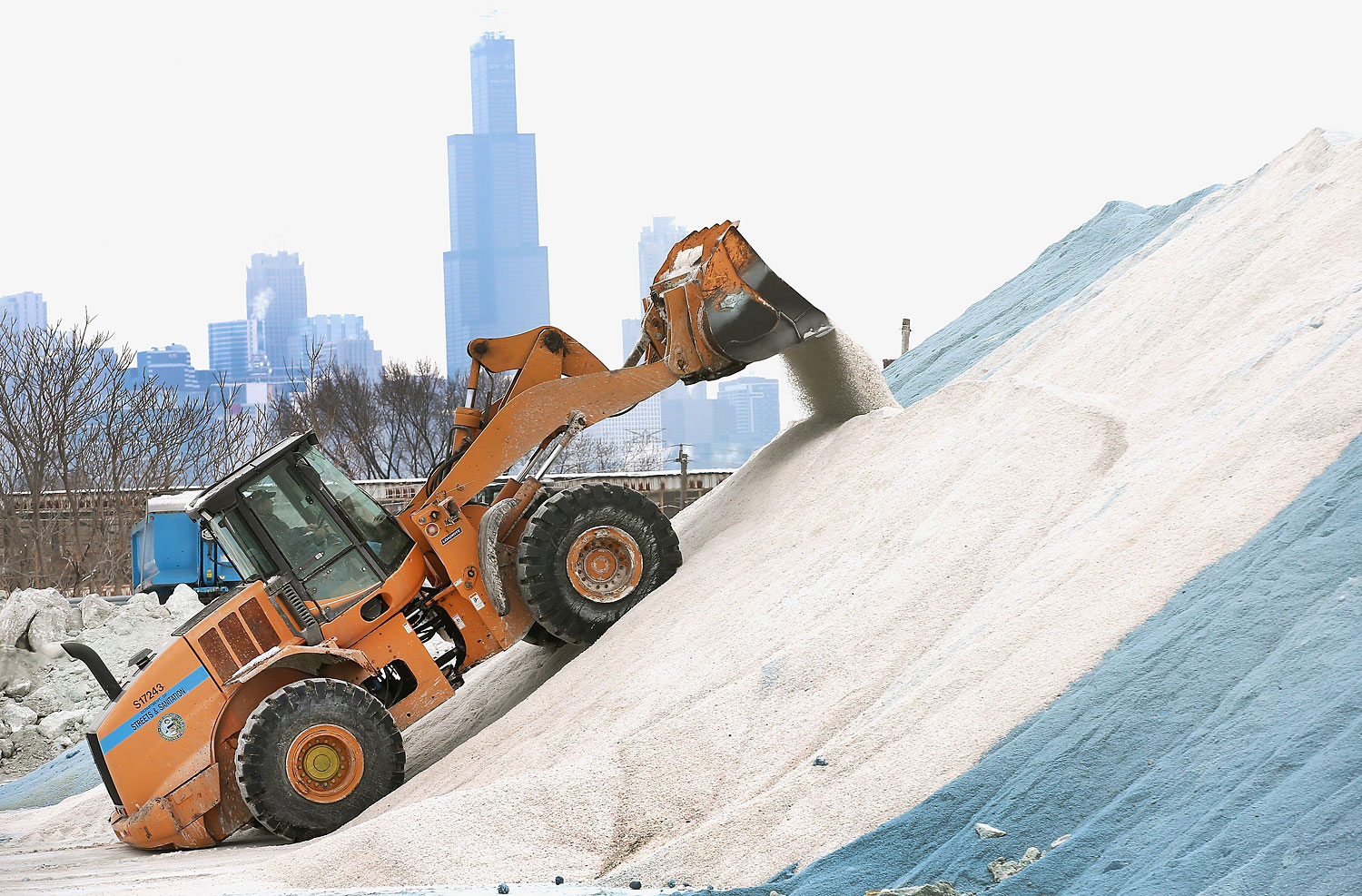
As large parts of the eastern United States get smacked with snowstorm after snowstorm, some states are turning to bizarre alternatives to help deal with dwindling supplies of salt to clear icy roads. Namely, beet juice and cheese brine.
A number of municipalities are reporting shrinking reserves of road salt, the most common substance used to fight icy roads. In Wichita, Kan., the city has gone through roughly 70% of its supply. Pennsylvania has used 200,000 more tons of salt than an average winter. New York City has needed help from the state to restock its supply.
But some states are thinking differently. In Indiana, K-Tech Specialty Coatings has been distributing “Beet Heet,” a sugar beet molasses-based product that increases rock salt’s ice melting capacity when the two are mixed. The mixture helps rock salt melt ice below its 15-degree limit, according to Beet Heet distributors, and helps municipalities melt larger amounts of ice and clean up snow more quickly. It is also sticky, preventing salt rocks from bouncing off of the road as cars drive past.
This year about 175 municipal agencies, mostly in the Midwest, are using the product. Butler County in Pennsylvania has been experimenting with the solution as part of a department or transportation research project into de-icing option, a PennDot official told TIME.
(MORE: Salt Supplies Dwindle as Snow Piles Up Across U.S.)
“Agencies can trust us now,” Denver Preston of Beet Heet said. “And they’ve been pleasantly surprised by how well it works.”
According to Preston they are expecting sales to be up 100% at the end of this season, which may end up being the case—at the end of last winter, they sold around 900,000 gallons. So far this year they’ve sold 1.5 million gallons.
Other municipalities have their own regional variations on traditional rock salt. In Wisconsin, the state has turned to – what else – cheese. Actually, cheese brine.
Todd Matheson, a state maintenance engineer for the Wisconsin Department of Transportation, says cheese brine from dairy farms is spread on the roads to keep them from freezing in about half a dozen counties around the state.
(MORE: 4 Businesses Making a Killing on the Polar Vortex)
The brine is a farm waste product, but in the last few years a handful of counties has repurposed it as a substitute for road salt.
For the 2012-2013 winter, Wisconsin spent $37 million on salt statewide. The state used 2.9 million gallons of salt brine – salt and water – last year. The state doesn’t track the number of gallons of cheese brine it uses, but it does appear to save the state at least a bit of money: the DOT often gets the brine for free from dairy farms looking to unload the liquid anyway.
While Wisconsin has been hit hard by snow and ice this year, Matheson says the state still has 275,000 tons of salt on hand out of about 500,000 tons it has each winter. The state, however, has had to redirect salt to certain parts of the state that have been hit harder by extreme weather.
The use of cheese brine in the state has grown since Polk County, on the Wisconsin-Minnesota border, began first using it in 2008. And while it seems to be an effective salt substitute, there are environmental concerns if significant amounts of it entered a river or lake. Then, there’s the odor, something more than a few Wisconsin residents have mentioned.
“I don’t know what it smells like,” Matheson says. “But I’d rather not get into that.”
More Must-Reads from TIME
- Donald Trump Is TIME's 2024 Person of the Year
- Why We Chose Trump as Person of the Year
- Is Intermittent Fasting Good or Bad for You?
- The 100 Must-Read Books of 2024
- The 20 Best Christmas TV Episodes
- Column: If Optimism Feels Ridiculous Now, Try Hope
- The Future of Climate Action Is Trade Policy
- Merle Bombardieri Is Helping People Make the Baby Decision
Contact us at letters@time.com